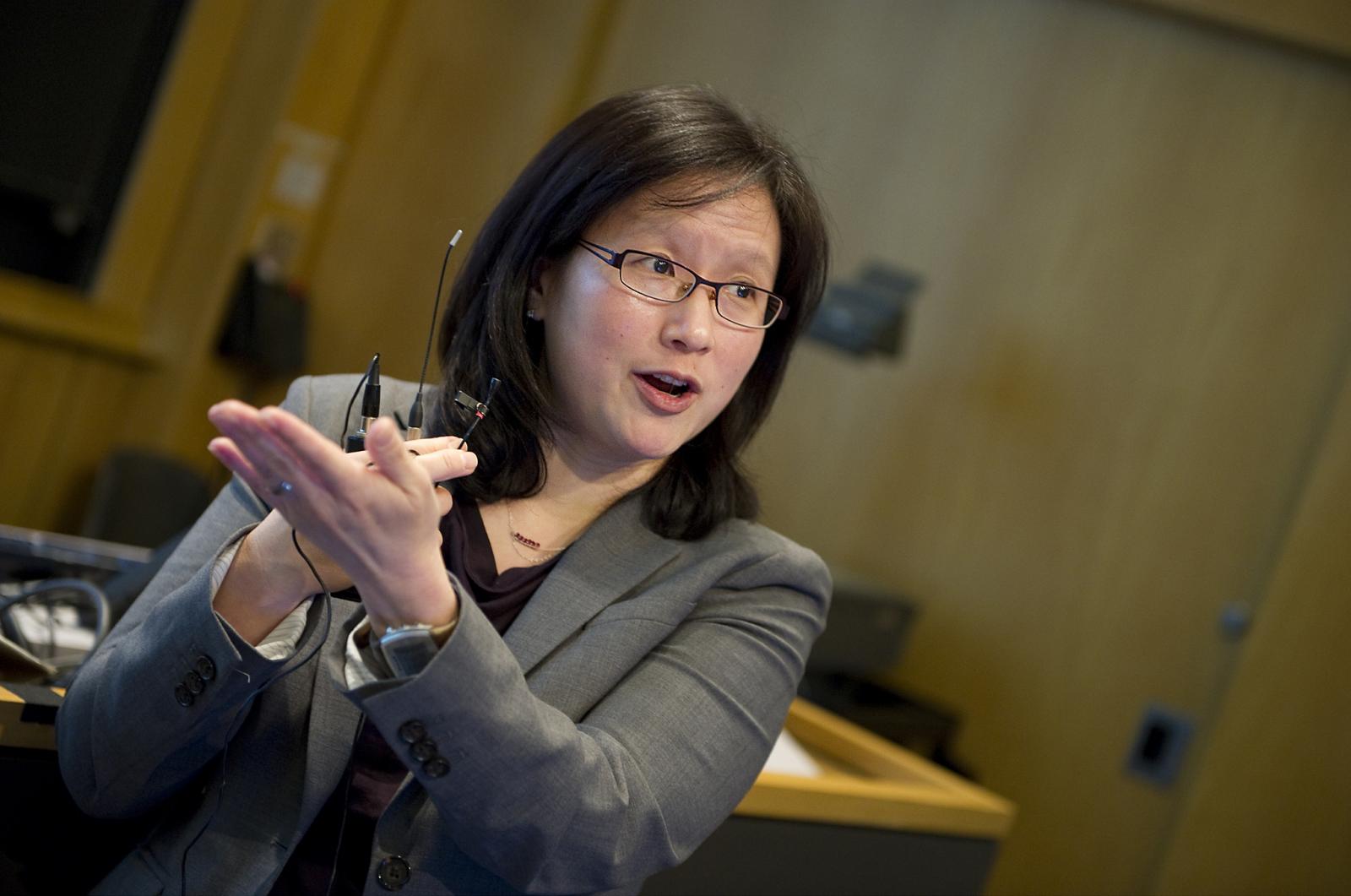In this post we have looked at the work of Professor Maria Yang Professor of Mechanical Engineering; Undergraduate Officer; MIT D-Lab Faculty Academic Director.

Professor Yang teaches students how to uncover ways to improve design in the world around them. This is so relevant for our Visual Literacy for Engineering Education Project. This project objective is clear: strengthen the visual literacy of engineers across participating countries and further afield by introducing innovative visual literacy training into our vocational teaching and provision.
In Professor Yang’s course 2.00 (Introduction to Design), she tells students to look for “pain points” — situations in which users have difficulty in using a product, which are usually a ripe opportunity for better design.
In one class, she recalls a student team came up with an idea for a product based on the experience of slicing a block of cheese with a chef’s knife. The pressure applied to the knife left a long indentation on the palm. As a solution, the team designed a device to distribute the force across the palm.
“That was literally a pain point!” Yang exclaims. “The world tells you what it needs — it’s just not always obvious.”
So where does Visual Literacy come into design?
Design is a process that can help you create impactful outcomes. It doesn’t matter what you design, the process usually progresses along the same lines. Early-stage design begins with a design vision that can be carried through to a successful design outcome.
The team behind the design think of the needs of the end result, they generate solutions, and they evaluate options. This can be known as design thinking. It is powerful and evolving and involves all team members. Ideas can be created by sketches, CAD models, prototypes, and even the language used, it’s about reading into these and formulating ideas.
Sketching ideas early on can have a big impact on the design later down the line. Creating simple prototypes can also help create a better outcome. Getting feedback on different prototypes and sketches matters a lot.
Professor Yang states that 70% of the cost of the idea is fixed in the first 30% of the process. From the choices you make and the route you go down, these can restrain you as you go along, in terms of cost and the impact of your design.
The whole process is cyclical, you come up with an idea, build on it, test it out either with users or to see if its function is what you’d hoped for. You continue that process until you find the design you are happy with. Even the way you present your research can help determine the outcome of your project.
Professor Yang has worked with Ferrari and IBM, to improve the way they do early-stage design. She is also working with NASA and found there are ways they can design better and more efficiently with better results. You can find out more about Professor Yang here: http://ideation.mit.edu/
The Visual Literacy for Engineering Education (VLEE) project is pursuing the provision of visual literacy for engineering training in our VET system through the following objectives;
- The Competence Framework (IO1) is a concerted effort to structure and communicate the engineering-specific components of visual literacy in a way that speaks the language of educators, addressing the specific gaps in their knowledge.
- the Toolkit (IO2) is aimed directly at teachers and trainers who wish to increase the quality of their teaching using digital visual media tools but are unsure which tools to use and how to use them.
- the Online Course (IO3) complements classroom work, providing teachers a practical resource to help consolidate student’s skill.
You can find out more about this interesting project over on the website: https://www.vleeproject.eu/
You can also follow the Facebook page for further updates: https://www.facebook.com/VLEEerasmus
VLEE is an EU Erasmus+ Project bringing together partners and experts from the Poland, Spain, Denmark, Ireland, United Kingdom.
